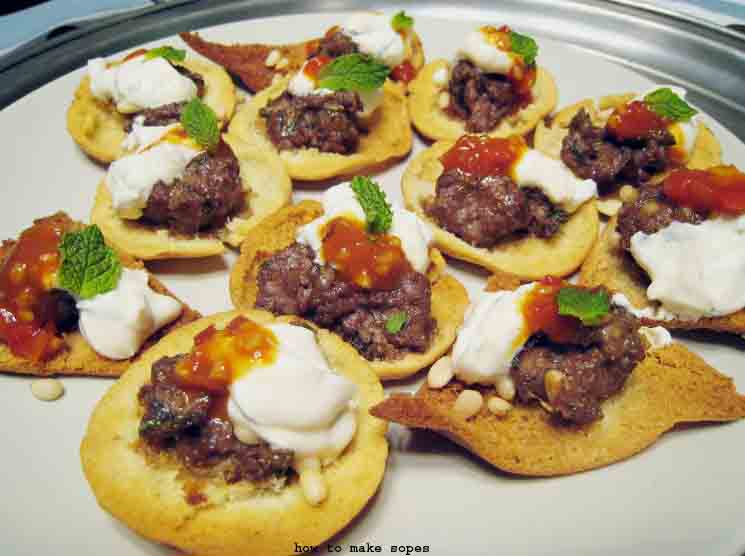
Introduction
how to make sopes , a traditional Mexican dish, have been delighting taste buds for generations with their unique combination of flavors, textures, and vibrant colors. These small, thick corn masa bases topped with savory ingredients offer a culinary adventure that captures the essence of Mexican cuisine. In this comprehensive guide, we will explore the step-by-step process of making sopes from scratch, ensuring an authentic and rewarding culinary experience.
Understanding the Basics
Before diving into the recipe, it’s essential to understand the key components and techniques involved in crafting the perfect sope.
Ingredients
- Masa Harina: The heart of any sope recipe, masa harina is a type of corn flour that forms the base of the dough. Ensure you choose a high-quality brand for the best results.
- Water: To create the masa dough, you’ll need water. Use warm water to achieve the right consistency.
- Salt: A pinch of salt enhances the flavor of the masa dough, providing a well-balanced taste.
- Tools
- Mixing Bowl: Choose a large mixing bowl to combine the masa harina, water, and salt.
- Plastic Wrap: After preparing the masa dough, cover it with plastic wrap to prevent drying.
- Comal or Griddle: This flat cooking surface is ideal for cooking the sopes. A cast-iron griddle works well for achieving a perfectly cooked base.
- Making the Masa Dough
- Measure and Combine Ingredients
In a large mixing bowl, measure out the desired amount of masa harina. Add a pinch of salt for flavor. Slowly incorporate warm water into the masa harina, stirring continuously until a soft, pliable dough forms.
- Knead the Dough
Transfer the masa dough onto a clean surface and knead it for a few minutes. The goal achieve a smooth consistency. If the dough is too dry, add a bit more water; if it’s too wet, sprinkle additional masa harina.
- Resting the Dough
Cover the masa dough with plastic wrap and let it rest for at least 30 minutes. This step allows the masa to fully hydrate, resulting in a more elastic and easy-to-work-with dough.
Shaping and Cooking the Sopes
- Divide the Dough
After the resting period, divide the masa dough into golf ball-sized portions. Roll each portion into a ball.
- Forming the Sopes
Place a ball of masa dough between two sheets of plastic wrap. Using a tortilla press or the palm of your hand, flatten the dough into a thick disc, about 1/4 inch in thickness. The edges should be slightly thicker to contain the toppings.
- Creating the Border
With your fingers, pinch the edges of the flattened masa disc to form a small raised border. This border is crucial for holding the toppings in place.
- Cooking the Base
Heat a comal or griddle over medium-high heat. Carefully transfer the shaped sope onto the hot surface and cook each side until it develops a golden-brown color, approximately 2-3 minutes per side.
- Repeat the Process
Continue shaping and cooking the sopes until all the masa dough balls are transformed into delicious bases. Keep the cooked sopes warm in a clean kitchen towel or tortilla warmer.
Tantalizing Toppings
Now that the sopes’ foundation is complete, it’s time to explore an array of tantalizing toppings that showcase the diversity of flavors in Mexican cuisine.
- Refried Beans
Spread a layer of flavorful refried beans onto the cooked sope base. The creamy texture of the beans adds depth to each bite.
Meat Options
- Shredded Chicken: Seasoned and slow-cooked shredded chicken is a classic sope topping. Ensure the chicken is tender and well-seasoned for maximum flavor.
- Picadillo: A savory mixture of ground beef or pork, diced potatoes, tomatoes, onions, and spices creates a rich and satisfying topping.
- Chorizo: For a spicy kick, crumbled chorizo sausage adds bold flavors to your sope. Cook it thoroughly before sprinkling it over the base.
- Fresh Vegetables
- Lettuce: Shredded lettuce provides a refreshing crunch to contrast with the savory toppings.
- Tomatoes: Diced tomatoes add a burst of freshness and vibrant color.
- Avocado: Sliced or mashed avocado imparts a creamy texture and a hint of richness.
- Radishes: Thinly sliced radishes contribute a peppery kick and a visually appealing touch.
- Cheese and Crema
- Queso Fresco: Crumbled queso fresco, a mild Mexican cheese, adds a subtle tanginess to each bite.
- Crema: Drizzle Mexican crema over the sopes for a cooling and slightly tangy finish.
- Assembling and Serving
- Building the Sopes
With all your toppings prepared, it’s time to assemble the sopes. Start by spreading a layer of refried beans on each cooked base. Add your chosen meat option, followed by fresh vegetables, cheese, and a drizzle of crema.
- Customize to Taste
One of the beauties of sopes is their versatility. Customize each sope according to personal preferences, experimenting with different combinations of toppings to create a culinary masterpiece.
- Serve Immediately
Sopes are best enjoyed fresh, so serve them immediately after assembling. The warm base, combined with the contrasting temperatures and textures of the toppings, creates a delightful eating experience.
Tips and Tricks for Success
- Quality Ingredients Matter
Use high-quality masa harina, fresh produce, and authentic Mexican cheeses and crema for the best results. Fresh, flavorful ingredients are the foundation of an authentic sope.
- Consistent Thickness
Ensure the masa discs are of uniform thickness to guarantee even cooking. The slight border around the edge helps contain the toppings, so pay attention to this detail.
- Don’t Rush the Resting Period
Allowing the masa dough to rest is crucial for achieving the right texture. Patience during this step results in a more elastic and pliable dough.
- Experiment with Toppings
Feel free to get creative with your toppings. From pickled jalapeños to salsa verde, there are countless ways to personalize your sopes and elevate the flavor profile.
How To Make Sopes
Sopes are a delightful traditional Mexican dish that offers a fusion of flavors and textures. To make sopes, start by preparing the masa dough, which is a key component of this delicious treat. Mix masa harina with water and salt to form a smooth dough, then shape it into small rounds and flatten them to create the base of the sope.
Next, fry the flattened masa discs until they are golden brown and crispy on the outside but still tender inside. Once they’re ready, top each sope with refried beans, shredded meat, or vegetables to add savory depth and richness. Finally, garnish with fresh ingredients like lettuce, salsa, cheese, and crema for a burst of color and tangy freshness.
What makes sopes truly special is their versatility – you can customize them with your favorite toppings to suit your taste preferences. This allows for endless creativity in the kitchen as you experiment with different flavor combinations and presentations. So whether you opt for classic toppings or venture into unique flavor pairings, making sopes is an opportunity to showcase your culinary prowess while delighting your taste buds with every irresistible bite.
Conclusion
Crafting authentic sopes is a rewarding culinary endeavor that allows you to explore the rich and diverse flavors of Mexican cuisine. From making the perfect masa dough to selecting and preparing mouthwatering toppings,
this comprehensive guide has provided the tools and techniques needed to master the art of crafting sopes from scratch. Whether you’re a seasoned cook or a kitchen novice, embrace the creativity and vibrancy of Mexican cooking by bringing the authentic flavors of sopes to your table.










